14 Current Mega Developments And How They’ve Performed (1,000 Units And Above)
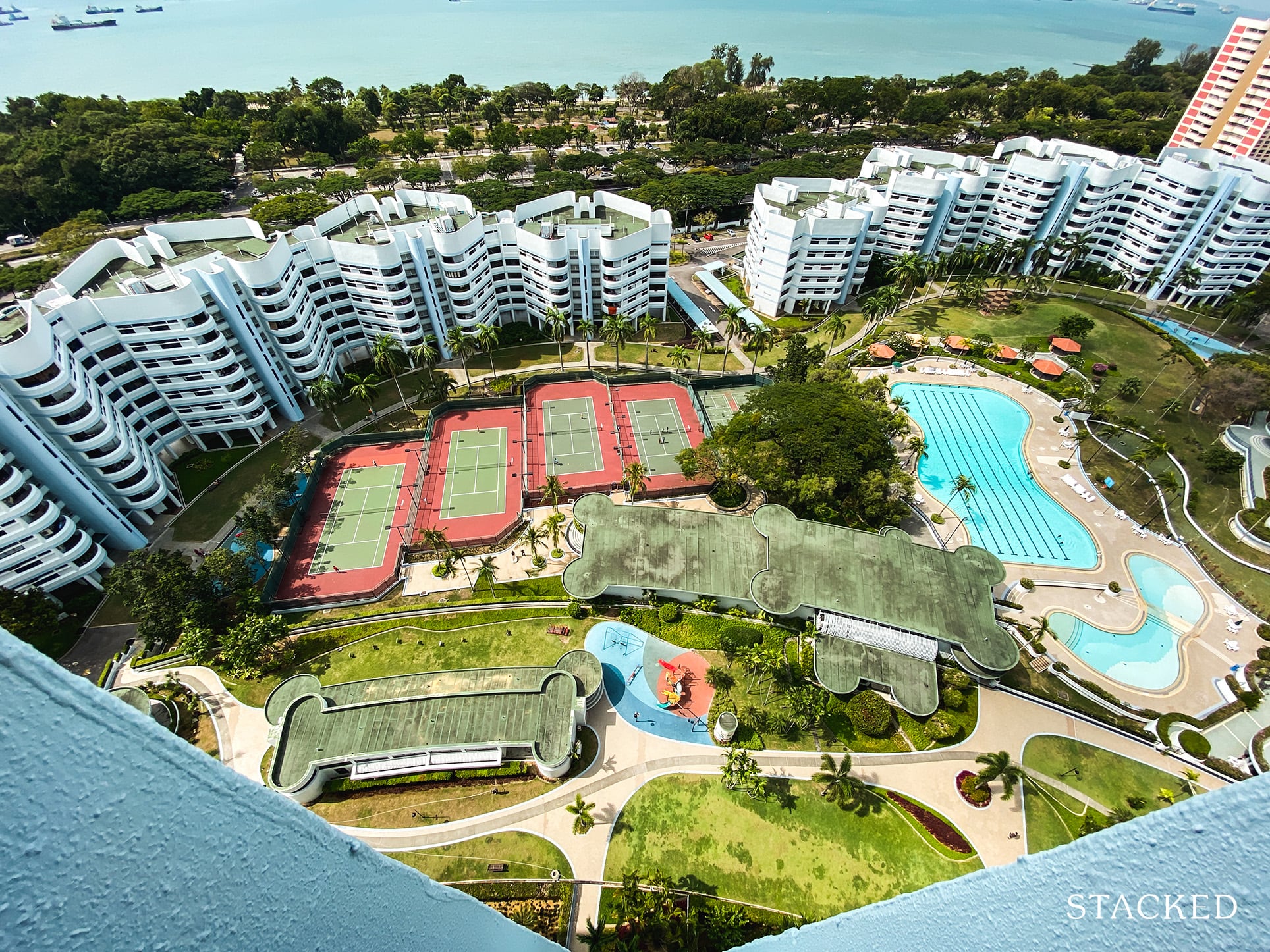
Get The Property Insights Serious Buyers Read First: Join 50,000+ readers who rely on our weekly breakdowns of Singapore’s property market.
A seasoned content strategist with over 17 years in the real estate and financial journalism sectors, Ryan has built a reputation for transforming complex industry jargon into accessible knowledge. With a track record of writing and editing for leading financial platforms and publications, Ryan's expertise has been recognised across various media outlets. His role as a former content editor for 99.co and a co-host for CNA 938's Open House programme underscores his commitment to providing valuable insights into the property market.
Mega developments saw solid demand in the past two years, from Normanton Park to Parc Clematis and Treasure at Tampines. In fact, if you are looking to buy such a unit today, you’d find slim pickings as most of the mega developments are quite close to fully selling out. Just as an example, the largest condo in Singapore, Treasure at Tampines is currently at a 98 per cent take-up rate. It’s certainly an impressive figure given it has a massive 2,203 units.
However, an ongoing worry about mega developments is the potential for competition: with so many units in the same development, will there be a price war when it comes time to sell or find tenants? We took a look at some mega developments (1,000+ units) over the past, and here’s what we found:
The commonly accepted theory regarding mega developments
Many – but not all – investors consider mega developments to have an inherent drawback. Due to the high unit count, these units are believed to lack privacy and exclusivity.
It also raises the possibility that, when it comes time to rent or sell, the owner may find several competing listings in the same project; sometimes even the same block. Some landlords, for instance, worry that tenants are quick to move to a cheaper unit in the same development, once their lease is up: it’s very little trouble, if you just need to move up or down a few floors, or into the next block. As such, tenants may be less “sticky”.
Investors may also dislike the difficulty of en-bloc sales for mega developments (see below).

Mega developments are broadly considered to be a better deal for pure home buyers. This is because the large site area allows for more lavish facilities, while the high unit count still allows for lower maintenance (i.e., the bill is split between more owners). This means facilities like a lagoon-like pool (Parc Clematis), multiple types of swimming pools (Parc Esta), and a variety of different entertainment options such as karaoke rooms or a jamming studio (Florence Residences). Due to the sizes too, the sheer number of units usually means that it can support commercial units like a mini-mart and childcare centre – which just makes things a whole lot more convenient.
Basically, stuff that you are able to enjoy because of the much larger land area and economies of scale.
Mega developments also tend to be a bit cheaper, than their more exclusive counterparts.
These are all theories or are based on anecdotal evidence, making them hard to prove.
How have the prices of current mega-developments moved?
Here’s a table depicting the $PSF movement of 11 mega projects (1,000+ units) since 1995.
| Project | Tenure | No. of Units | 2021 Average $PSF |
| Mandarin Gardens | 99 yrs from 08/03/1982 | 1,006 | $1,096 |
| Sims Urban Oasis | 99 yrs from 29/07/2014 | 1,024 | $1,558 |
| The Bayshore | 99 yrs from 31/05/1993 | 1,038 | $1,013 |
| The Interlace | 99 yrs from 11/02/2009 | 1,040 | $1,311 |
| Marina One Residences | 99 yrs from 01/07/2011 | 1,042 | $2,429 |
| Bayshore Park | 99 yrs from 17/03/1982 | 1,083 | $1,031 |
| The Sail @ Marina Bay | 99 yrs from 12/08/2002 | 1,111 | $1,926 |
| Reflections At Keppel Bay | 99 yrs from 15/03/2006 | 1,129 | $1,620 |
| The Minton | 99 yrs from 27/07/2007 | 1,145 | $1,131 |
| Kingsford Waterbay | 99 yrs from 03/03/2014 | 1,165 | $1,267 |
| Melville Park | 99 yrs from 01/09/1992 | 1,232 | $707 |
| High Park Residences | 99 yrs from 05/11/2014 | 1,390 | $1,262 |
| Riverfront Residences | 99 yrs from 31/05/2018 | 1,451 + 21 Strata Landed | $1,366 |
| D’Leedon | 99-year Leasehold | 1,703 + 12 Strata Landed | $1,683 |
Some key highlights to note:
- Only Reflections at Keppel Bay saw falling prices
- No strong evidence of resale difficulty
- Mega developments in pricey areas could fare worse
- Rental yields are generally higher
- Ultimately, unit count is a difficult factor to isolate
1. Only Reflections at Keppel Bay saw falling prices
Reflections at Keppel Bay averaged around $1,858 psf in 2007, and has currently fallen to about $1,640 psf.
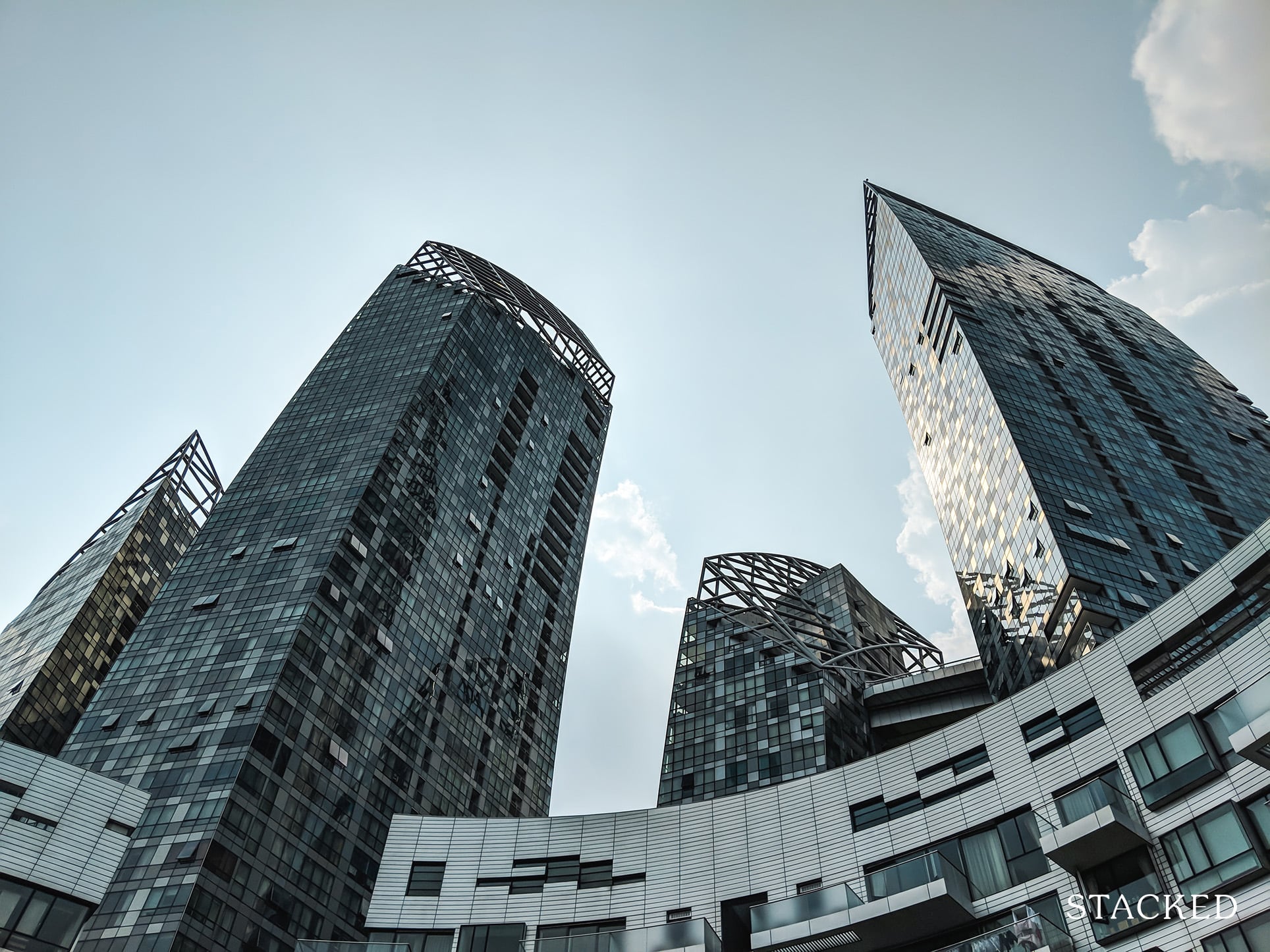
Reflections at Keppel Bay is also unusual, in that it has a record of just 40 profitable transactions, and 169 unprofitable transactions. Interestingly, The Sail @ Marina Bay – another prime property in District 1 – had a record almost as bad as Reflections (see below).
From word on the ground, a large number of unprofitable transactions saw a rush by sellers to unload. Discounts had become quite pronounced, with some capital losses in excess of $1 million. Realtors noted that most owners were pure investors, not home buyers; and hence were faster to sell and cut their losses.
Thanks to the sheer number of listings that appeared at one go, prices were also pulled down by sellers desperate for fast transactions.
More from Stacked
We Found The Cheapest And Biggest 5-room Flats Over 1,400 Sq ft You Can Buy Right Now
How big is a 5-room HDB flat? Well, there’s technically no right answer, since HDB sizes vary from project to…
As an aside, there were worries earlier in the pandemic that rental markets in prime regions like Sentosa (District 4) could collapse, due to travel restrictions and fewer expat tenants. This also pushed some investors to sell.
While the situation here seems to support the theory of mega development downsides, it is the only case out of all the mega developments we checked. It’s a bit ironic that an outlier is the one that best matched the theories.
2. No strong evidence of resale difficulty
With the exception of Reflections at Keppel Bay and The Sail @ Marina Bay, every mega development had a high ratio of profitable to unprofitable transactions:
- Bayshore Park: 126 profitable vs. 19 unprofitable
- Mandarin Gardens: 97 profitable vs. 15 unprofitable
- Melville Park: 128 profitable vs. 49 unprofitable
- The Bayshore: 160 profitable vs. 26 unprofitable
- The Sail @ Marina Bay 111 profitable vs. 95 unprofitable
As such, theories about future buyers “avoiding” mega developments seem mostly unfounded.
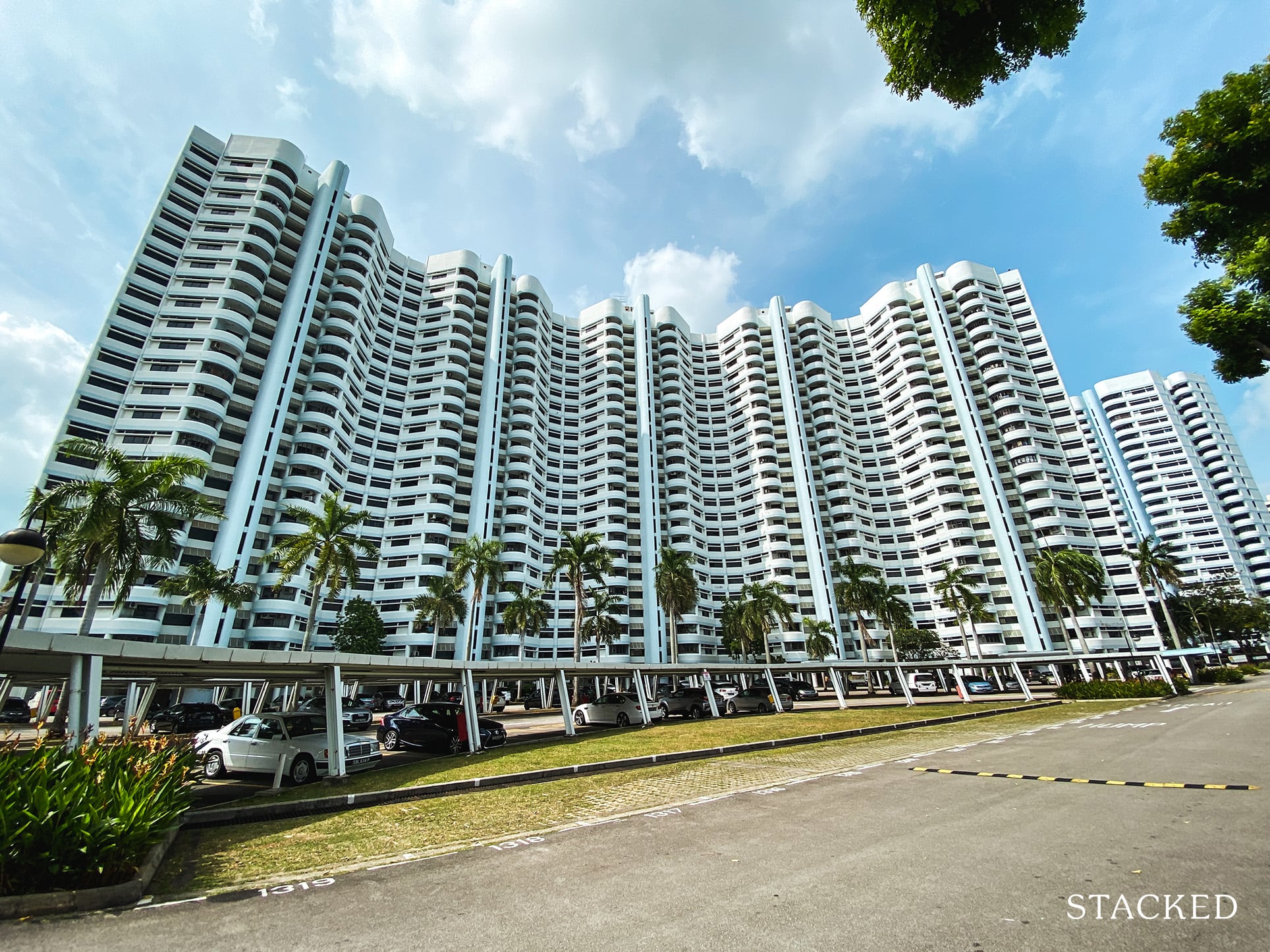
However, note that this applies to individual unit sales. It’s still true that mega developments are unpalatable for collective sales. Apart from the difficulty in obtaining consent (Mandarin Gardens is a prime example of this), developers are less confident that they can complete and sell such large properties in five years. Perhaps even more so now, with the new cooling measures in place.
See our earlier article, on why developers have a five-year deadline.
Apart from the former HUDC estate of Normanton Park, the recent en-bloc sales haven’t been anywhere close in scale – mostly ranging from boutique to mid-sized plots.
3. Mega developments in pricey areas could fare worse
Notice that Reflections at Keppel Bay, and The Sail @ Marina Bay, seem to fare a bit worse than other mega developments. The feature they both share is their pricey location: Reflections near Sentosa, and The Sail being within the CBD.
Realtors we spoke to said this could be due to the types of buyers and tenants in such high-rent neighbourhoods. In essence, affluent buyers can afford – and often prefer – a higher degree of privacy. As such, crowded developments have limited appeal to them. This is perhaps why there are so few of these developments in such areas, it’s just not what buyers in this category want.
At the same time, regular home buyers may not want to pay high prices, for a project that’s so crowded. Most Singaporean home buyers, for instance, wince at the thought of a $2 million+ unit that’s packed with over 1,000 households.
4. Rental yields are generally higher
The average gross rental yield in today’s condo market (2021) is between two to three per cent. One notable trait among mega developments is that they tend toward the higher end of the range.
Melville Park, for instance, transacts at an average of just $716 psf, but rents at an average of $2.44 psf – an average gross rental yield of 4.08 per cent.
The Bayshore transacts at an average of $1,058 psf, but has a rental average of $2.60 psf. This is an implied rental yield of 2.95 per cent.
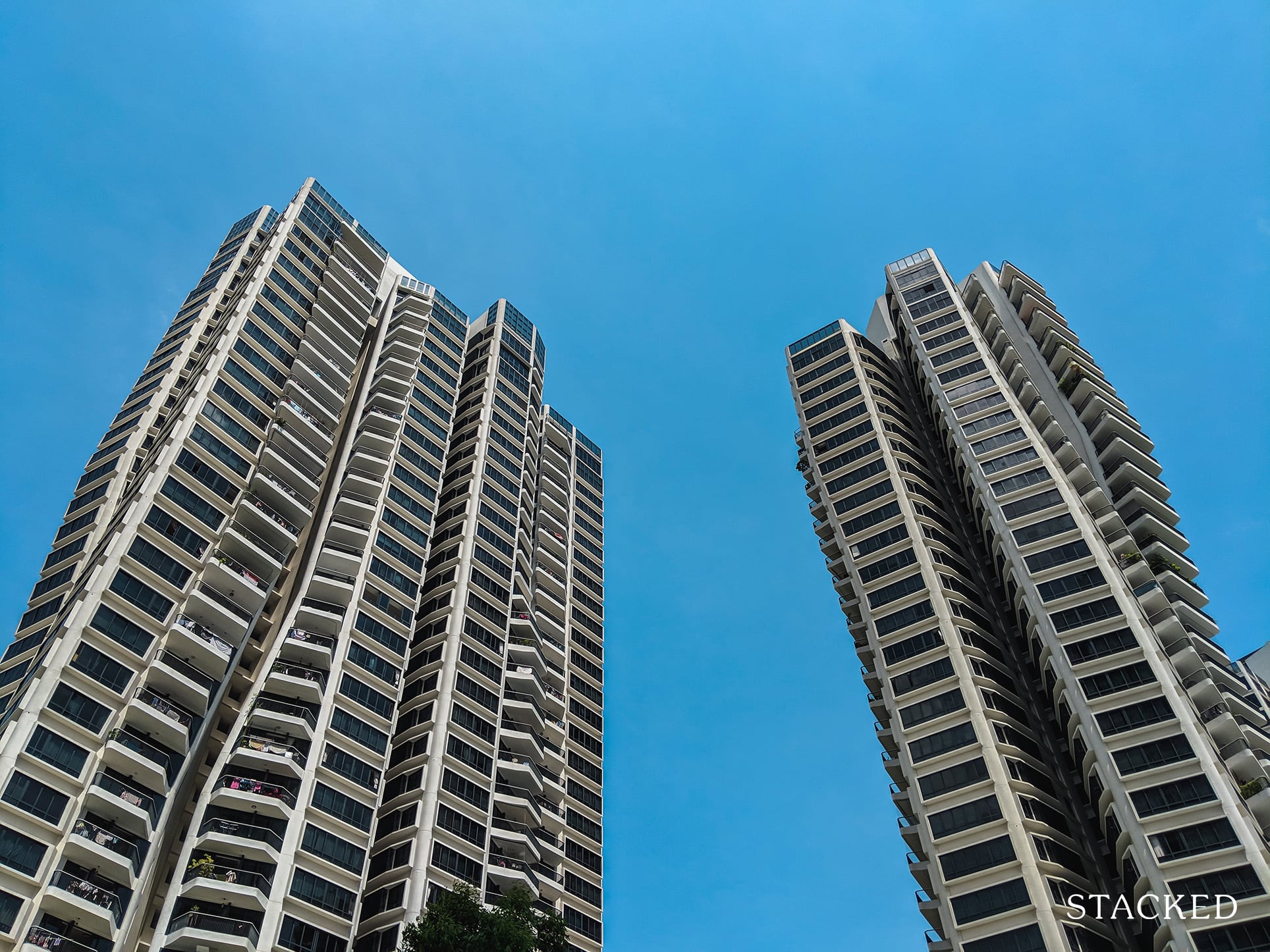
This is not simply because our two examples are older. Even if we take a 10-year-old mega development, like D’Leedon (completed 2010), the average price range is $1,694 psf, while the average rental is $4.14 psf. This is an implied rental yield of 2.94 per cent.
Bear in mind that the high unit count also tends to mean lower maintenance fees, which can mean higher net rental yields as well. Mega developments may not be as bad for rental as some suspect.
5. Ultimately, the unit count is a difficult factor to isolate
The difficulty here is that mega developments built in the ‘80s are not similar to never mega developments like Treasure at Tampines, Parc Clematis, etc.
The older mega developments, for instance, never quite took advantage of their site area in the same way newer ones have. Mandarin Gardens is massive, but the facilities – even at their peak – were not on par with what you’d find at Normanton Park or Leedon Green today.
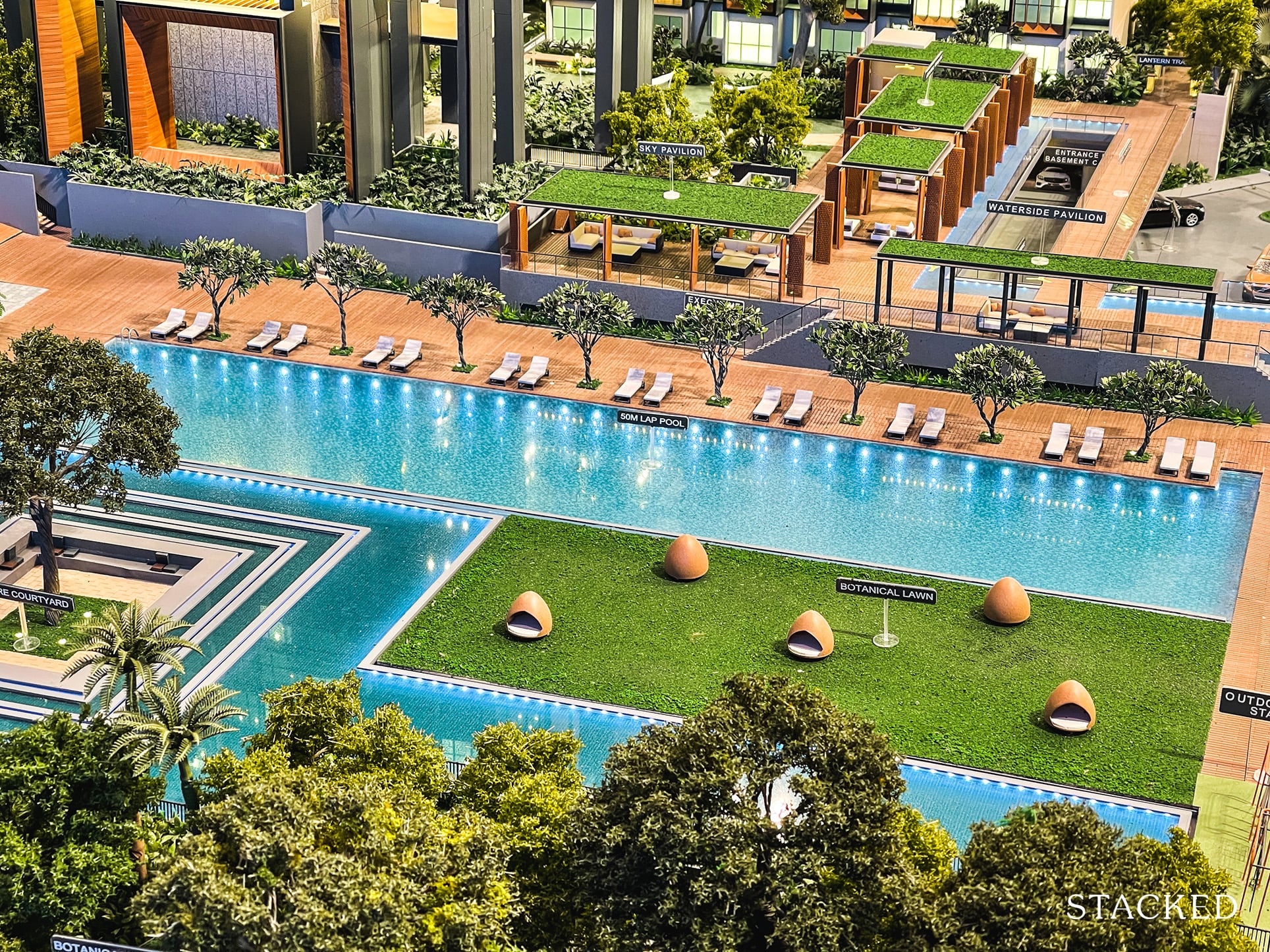
As such, we need to consider the possibility that newer mega developments will perform in very different ways.
Besides this, it is difficult to isolate unit count as a factor, amid other variables such as accessibility, nearby amenities, new residences appearing nearby, etc.
The best advice for buyers is to focus on the comfort level, which is the one observable fact. If the mega development seems too noisy or crowded to you, it may be to tenants as well. If it doesn’t bother you, it may not be as huge a drawback as you think.
And for those who want to count on en-bloc sales (never a good idea), mega developments shouldn’t be the highest on your list.
For more on new and resale condos in the Singapore private property market, follow us on Stacked. We’ll also provide you with the latest news and trends as they unfold.
If you’d like to get in touch for a more in-depth consultation, you can do so here.
Ryan J. Ong
A seasoned content strategist with over 17 years in the real estate and financial journalism sectors, Ryan has built a reputation for transforming complex industry jargon into accessible knowledge. With a track record of writing and editing for leading financial platforms and publications, Ryan's expertise has been recognised across various media outlets. His role as a former content editor for 99.co and a co-host for CNA 938's Open House programme underscores his commitment to providing valuable insights into the property market.Read next from Property Picks

Property Picks Where to Find Singapore’s Oldest HDB Flats (And What They Cost In 2025)

Property Picks Where To Find The Cheapest 2 Bedroom Resale Units In Central Singapore (From $1.2m)
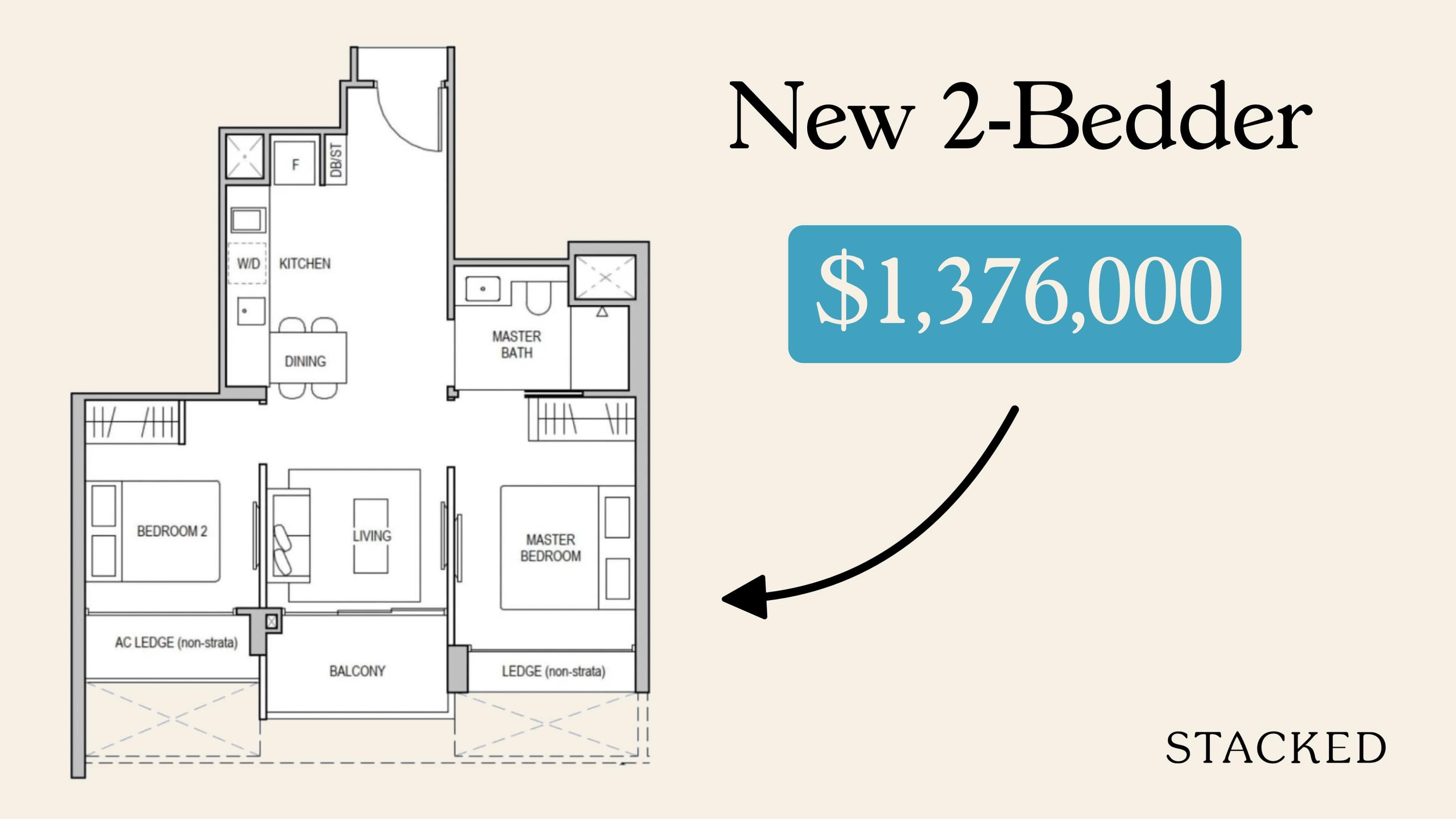
Property Picks 19 Cheaper New Launch Condos Priced At $1.5m Or Less. Here’s Where To Look
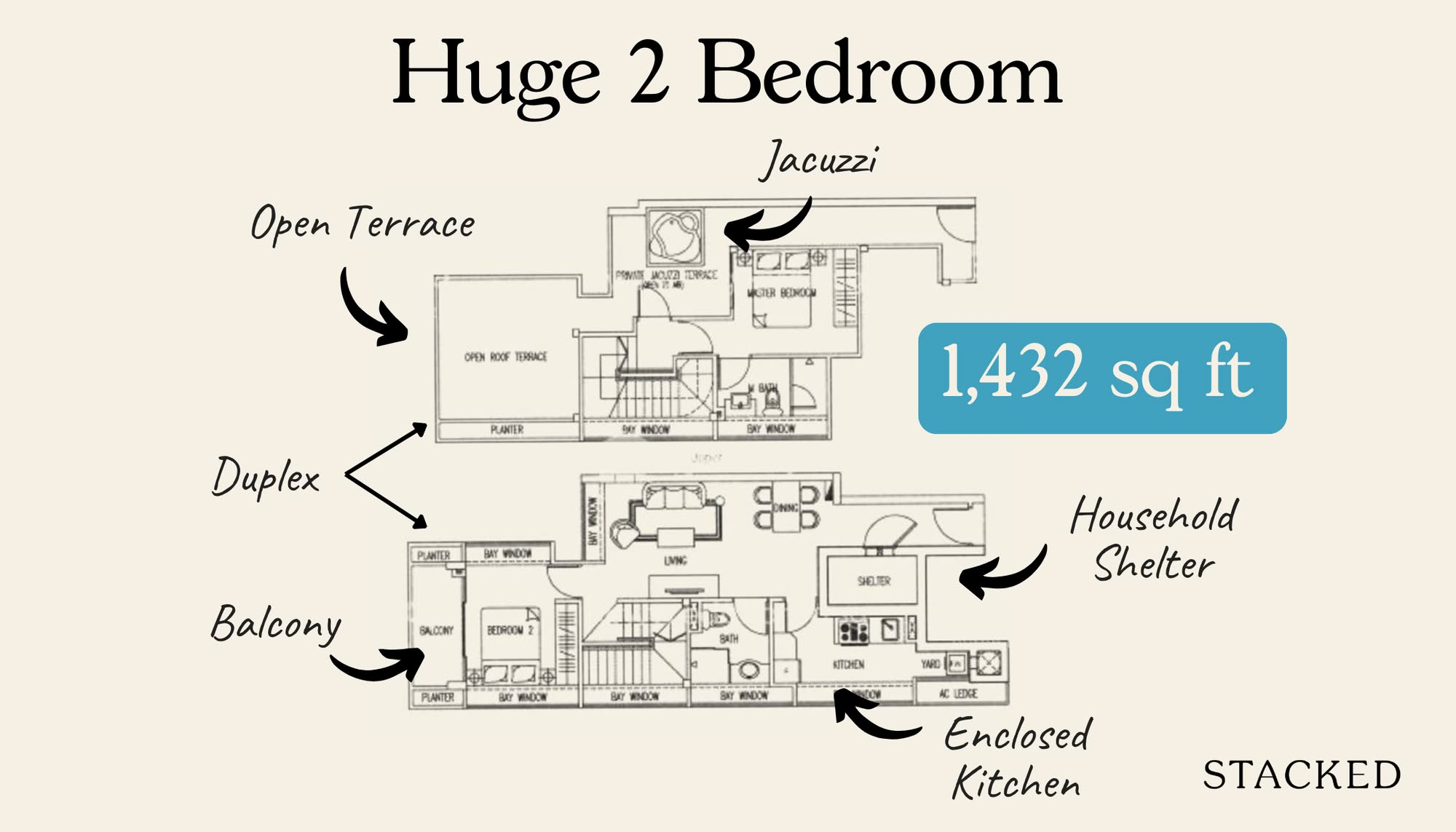
Property Picks Here’s Where You Can Find The Biggest Two-Bedder Condos Under $1.8 Million In 2025
Latest Posts

On The Market Here Are The Cheapest 4-Room HDB Flats in Central Singapore You Can Still Buy From $490K

Editor's Pick Should We Buy An Old 99-Year Leasehold Condo To Live In: Will It’s Value Fall When The Lease Runs Out?

Pro How A Once “Ulu” Condo Launched In 1997 Became A Top Performer

Editor's Pick I Reviewed A New Launch 4-Bedroom Penthouse At Beauty World

Property Market Commentary When Renting In Singapore Is The Smarter Move — And Buying Can Wait

Editor's Pick Why Singaporean Families Are Looking At This Landed Enclave From Around $4M

Singapore Property News Lentor’s First Condo Is Complete — The Early Profits May Surprise You

Editor's Pick A Wave Of New HDB Resale Supply Is Coming In 2026: Here’s Where To Find Them

Property Advice We Own A $800K 1-Bedder And A $1.1M 3-Bedder: Is It Possible To Upgrade To A 4-Bedder Condo?

On The Market These Are Some Of The Cheapest 5-Room HDB Flats Left In Central Singapore

Pro This 698-Unit Ang Mo Kio Condo Launched At The Wrong Time — And Still Outperformed Peers
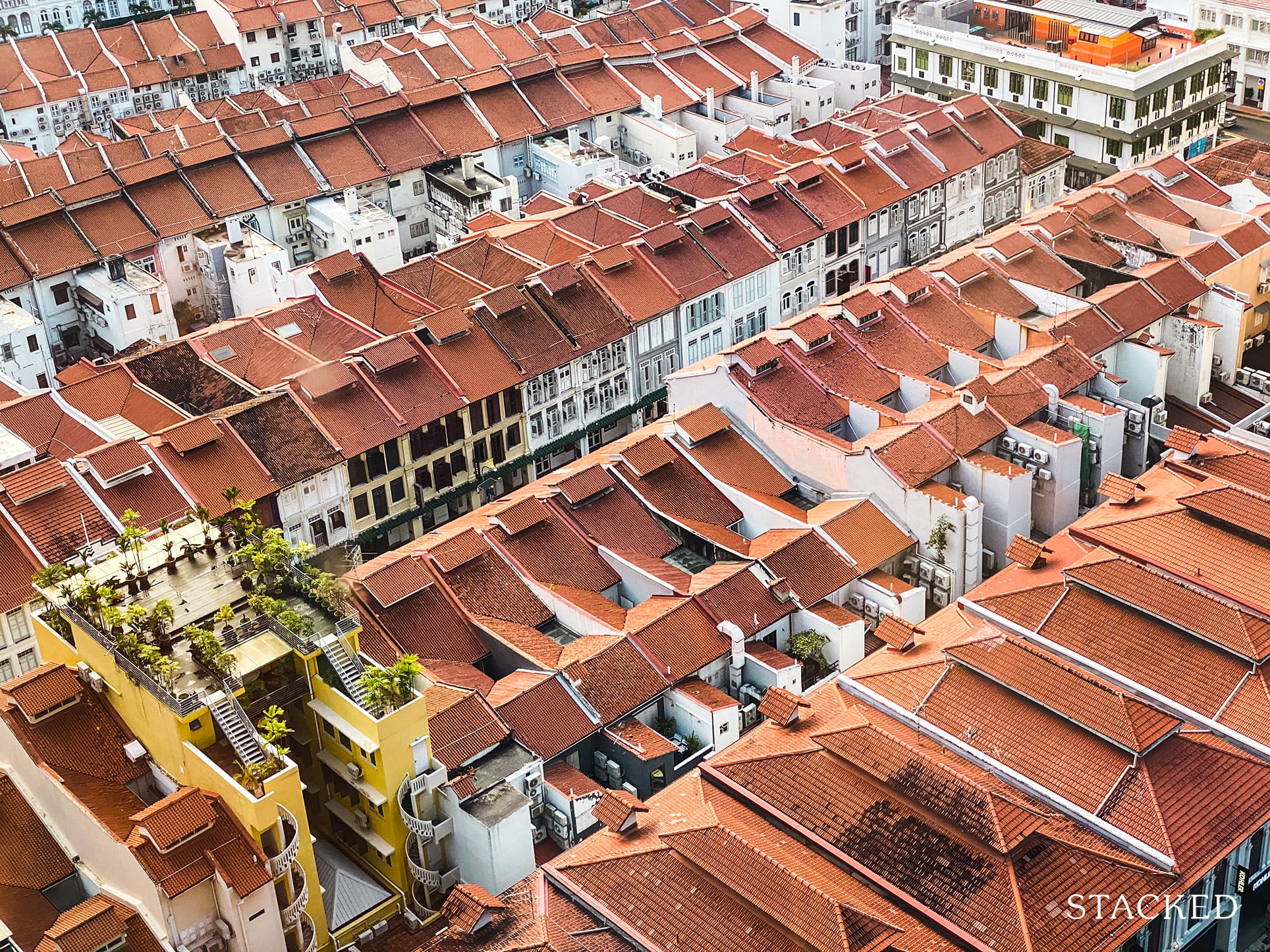
Singapore Property News $281.2M in Singapore Shophouse Deals in 2H2025 — But That Number Doesn’t Tell the Full Story
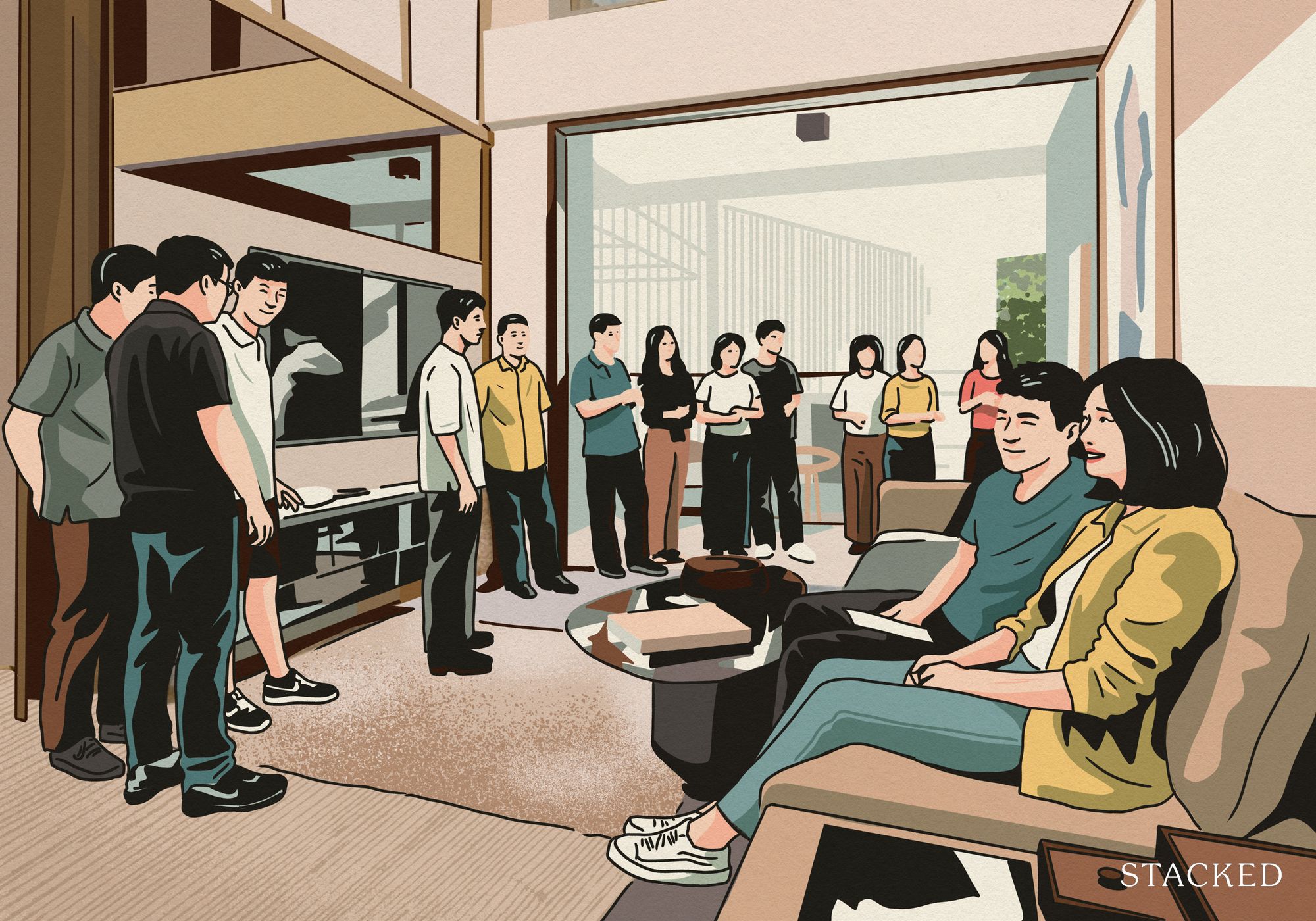
Property Market Commentary 5 Key Features Buyers Should Expect in 2026 New Launch Condos
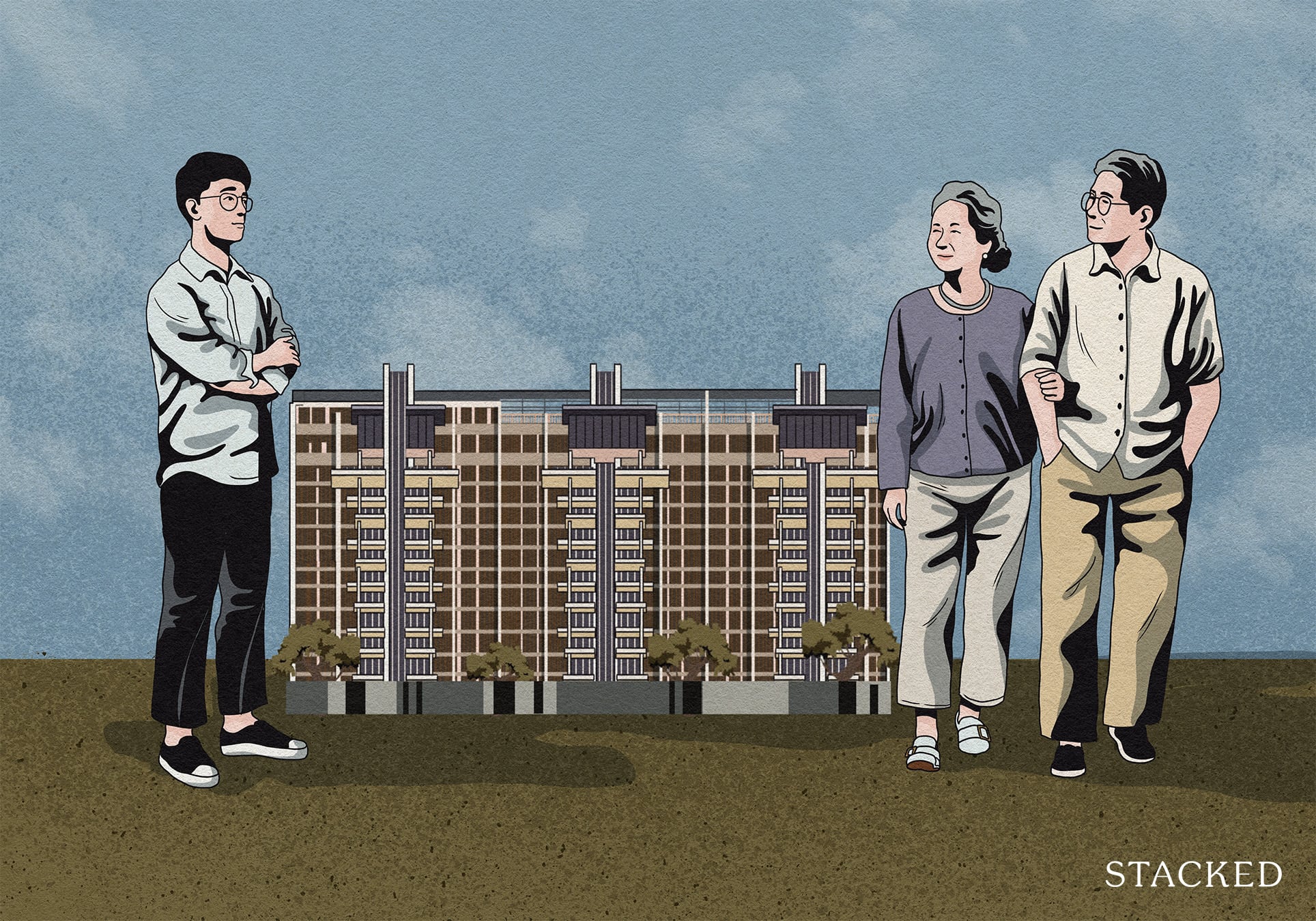
Editor's Pick What “Lucky” Singaporean Homebuyers Used To Get Away With — That You Can’t Today

Property Investment Insights These Resale Condos In Singapore Were The Top Performers In 2025 — And Not All Were Obvious Winners


